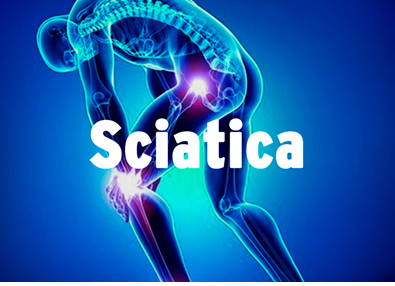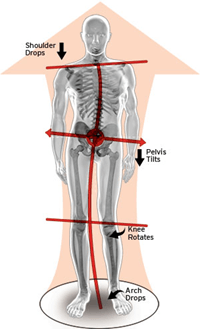Sciatica - Causes and Symptoms
Sciatica is a symptom of an underlying condition and not a diagnosis in and of itself.
Overview
Sciatica (pronounced sigh-at-eh-kah) refers to sensations of tingling, numbness, or weakness that originate in the lower back and travel through the buttock and down the large sciatic nerve in the back of each leg. It is a symptom of an underlying condition; not a diagnosis in and of itself. A number of common lower back problems can cause sciatica including a lumbar herniated disc, degenerative disc disease, sacroiliac joint dysfunction, pregnancy, spinal tumor, infection, muscle strain, and a number of other conditions.
Your doctor’s approach to treating sciatica will depend on the underlying cause. In most cases, it is more likely to be successful when the focus is on restoring balanced function in the entire body—starting from the ground up—rather than simply reducing the pain and inflammation in the irritated tissues. Chiropractic care plus custom orthotics can help.
Treatment
Your Chiropractor is likely to use a combination of techniques to help your condition. These may include heat or ice. Most people use ice first, 20 minutes a day in the affected area, but some find more relief with heat. The two may be alternated.
Because of the many conditions that can compress nerve roots and cause sciatica, treatment will differ between one patient with sciatica and another.
Spinal adjustments focus on providing better spinal column alignment, which in turn is designed to help address a number of underlying conditions that can cause sciatic nerve pain. Other modalities may include acupuncture and Massage therapy. Custom orthotics can provide additional support, stability, and shock absorption from the ground.
Prevention
Prevention techniques include keeping your bones and tissues strong and healthy through exercise and diet. Avoid tobacco and excessive alcohol use as these can weaken bones and cause problems with the blood supply in the extremities. Reduce your risk of injury by adhering to safety measures on the job and beyond (like wearing a seatbelt). Custom orthotics can provide additional support, stability, and shock absorption from the ground.
Recovery
Recover time will vary depending on the cause. Rest, ice, heat, elevation, compression; plus strengthening exercises may improve recovery time.
For the initial flare up of sciatica, bed rest is usually fine for a day or two but avoiding activity any longer can lead to a self-feeding cycle where episodes of pain lead to inactivity, leading to more pain, and so on.
Without proper exercise, low back muscles become weak and deconditioned, leaving them less able to support the back and the spine. Keeping the hamstrings flexible by stretching is particularly important: tight hamstrings add stress to the low back, which can aggravate low back problems.
Chiropractic care plus custom made orthotics can help restore balanced function in the entire body—starting from the ground up to both treat and prevent future flare-ups of sciatica.
Symptoms of Sciatica
- Pain in one side of the buttock or leg
- Pain starting in the low back or buttock that continues down the back of the thigh and into the lower leg and foot (along the path of the sciatic nerve)
- Pain described as sharp or searing, rather than dull
- "Pins-and-needles," prickling, sensation, or numbness or weakness down the leg in some cases
- Severe or shooting pain in one leg, making it difficult to stand up or walk
- Pain and other symptoms in the toes
- Lower back pain that


